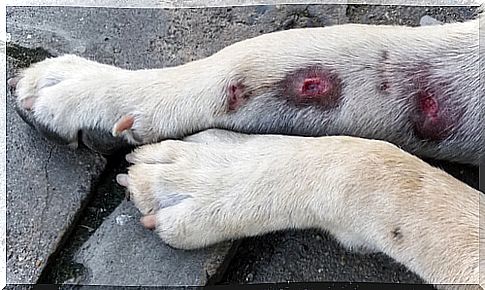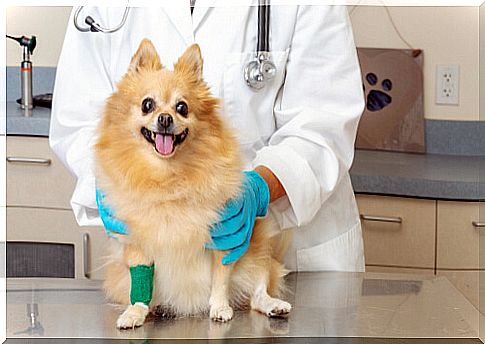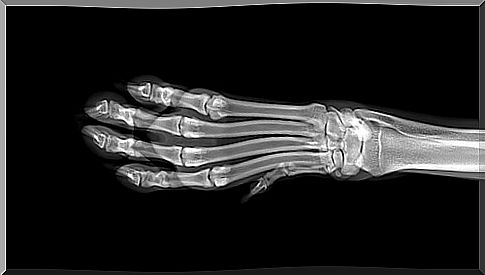Swollen Paws In Dogs: Causes And Symptoms

Swollen paws in dogs can indicate anything from a simple injury to a chronic disease. Observing the possible associated symptoms will help determine the origin of the animal discomfort.
There are many factors that can lead to limb swelling. To determine them, it is convenient to analyze how the process has passed, the number of affected areas and the type of inflammation. Local pain or the presence of internal fluid are two of the most frequent complaints. However, the severity of each of them is totally opposite.
Therefore, in a case of swollen legs in dogs, the best option will be to go to the professional.
Causes and symptoms
Regardless of the cause, pain and heat are recurring symptoms. This increase in temperature can lead to a feverish state, which does not have to correspond to the most serious conditions.
Some of the pathologies that can lead to swelling are:
- Arthritis. In addition to pain and heat, redness and lameness are often very common. This pathology is very common in the joints of older dogs, although it can occur in young dogs that have a genetic predisposition.
- Sprains. Either due to trauma or continued physical effort, they are one of the main reasons for swelling. Large dogs are more prone to them; they are evident by the lameness shown.

- Hypertrophic osteodystrophy. This bone disease affects large breed puppies during their development process. It is characterized by being very painful, affecting several limbs and being accompanied by febrile episodes. If it is not treated properly, with anti-inflammatories, hygienic and sanitary care and rest, it can be severely complicated.
- Hygroma. It is defined as a painless sac of fluid formed in the dog’s joints. Normally, it originates due to excess pressure due to poor posture. It must be treated to avoid infection.
- Osteosarcoma. Bone cancer is one of the most lethal diseases and affects mainly large dogs. The greater the progression of the disease, the greater the inflammation, pain, and local heat.
Treatment of swollen paws in dogs
To determine the cause of the swelling, the vet will do a series of diagnostic tests, including blood and urine tests, as well as X-rays of the extremities. In the event that the latter are not conclusive, an MRI may be required. If osteosarcoma is suspected, a bone biopsy will be done.

For milder conditions , anti-inflammatories, rest and possibly physiotherapy will be prescribed . If it is a bag of fluid, it may need to be surgically removed. As for cancer cases, in addition to chemotherapy treatments, the most common is to opt for the amputation of the limb.
Preventing swollen paws in dogs may not always be feasible. However, when it comes to arthritis, it is important to control the weight of the animal and perform moderate exercise.
Physical activity should always be practiced in a balanced way, and its excess is just as dangerous as its deficiency. Also, avoiding bad posture and too hard beds can reduce the likelihood of hygromas.
Adopting a healthy lifestyle and regular veterinary check-ups will help make animals less prone to disease and, if they do, the best treatment should be administered as soon as possible.









